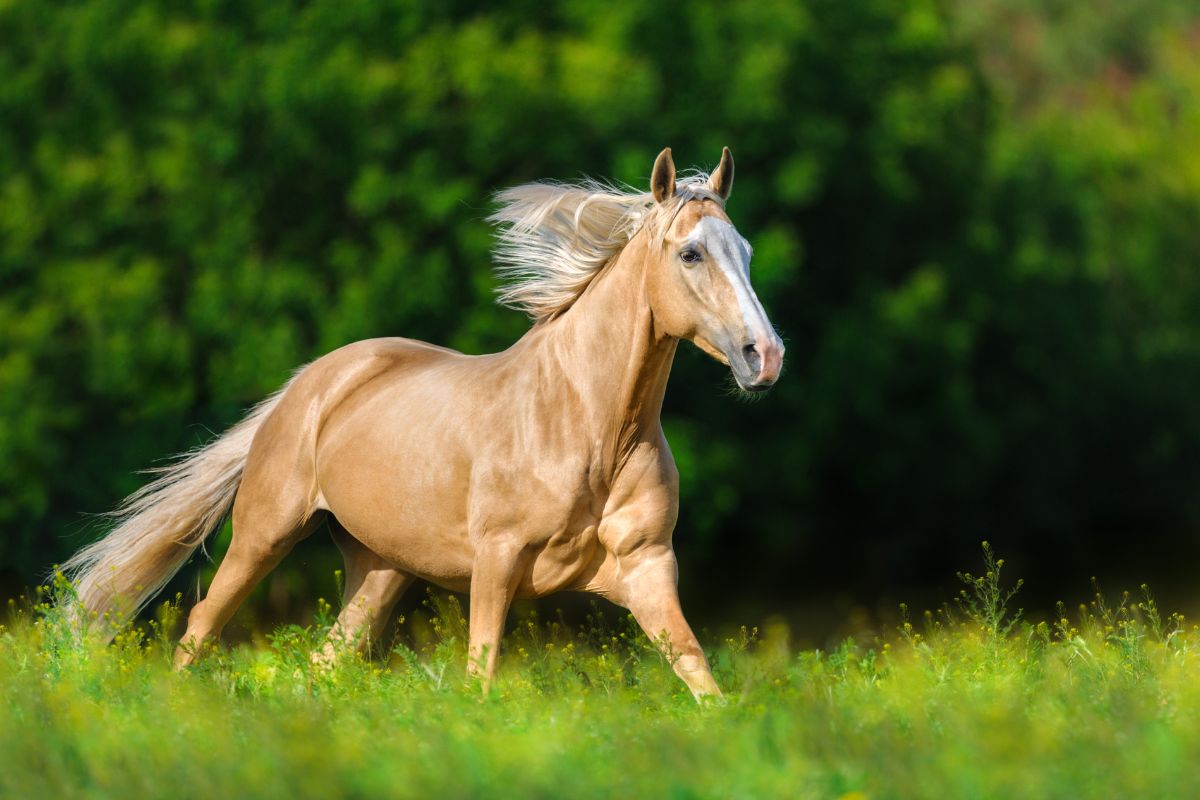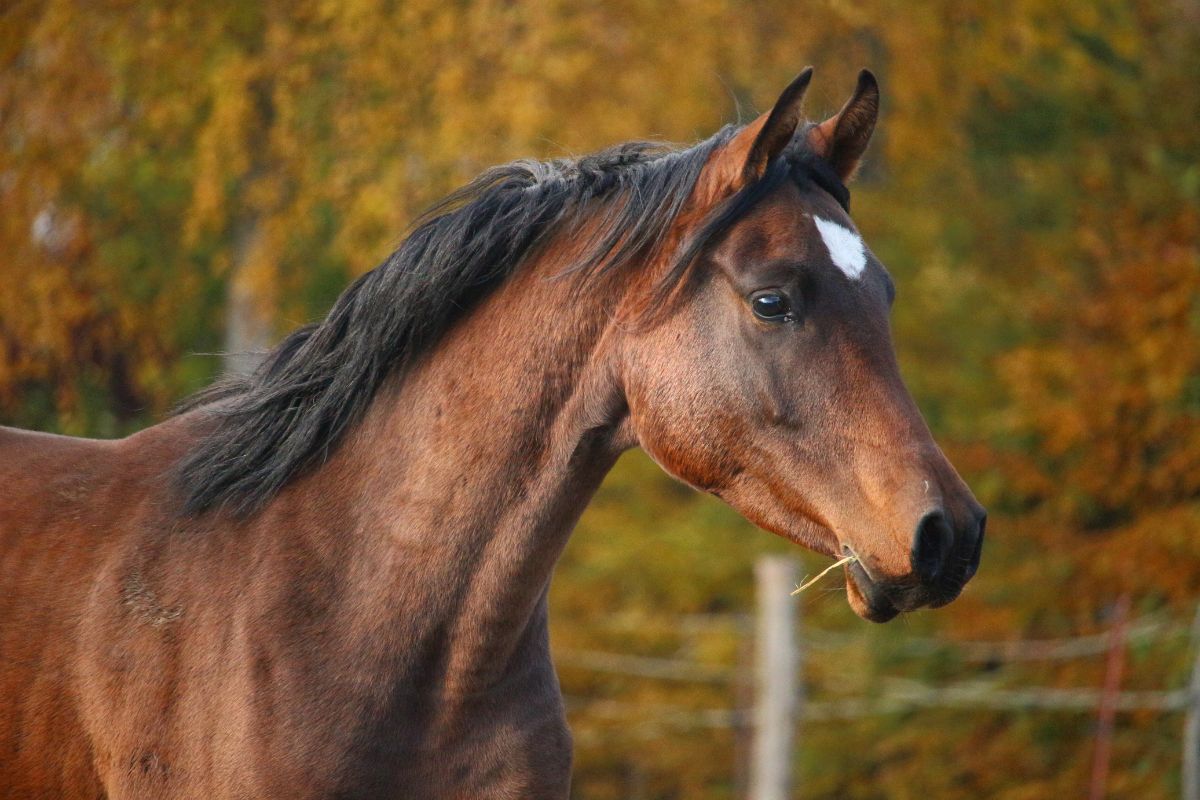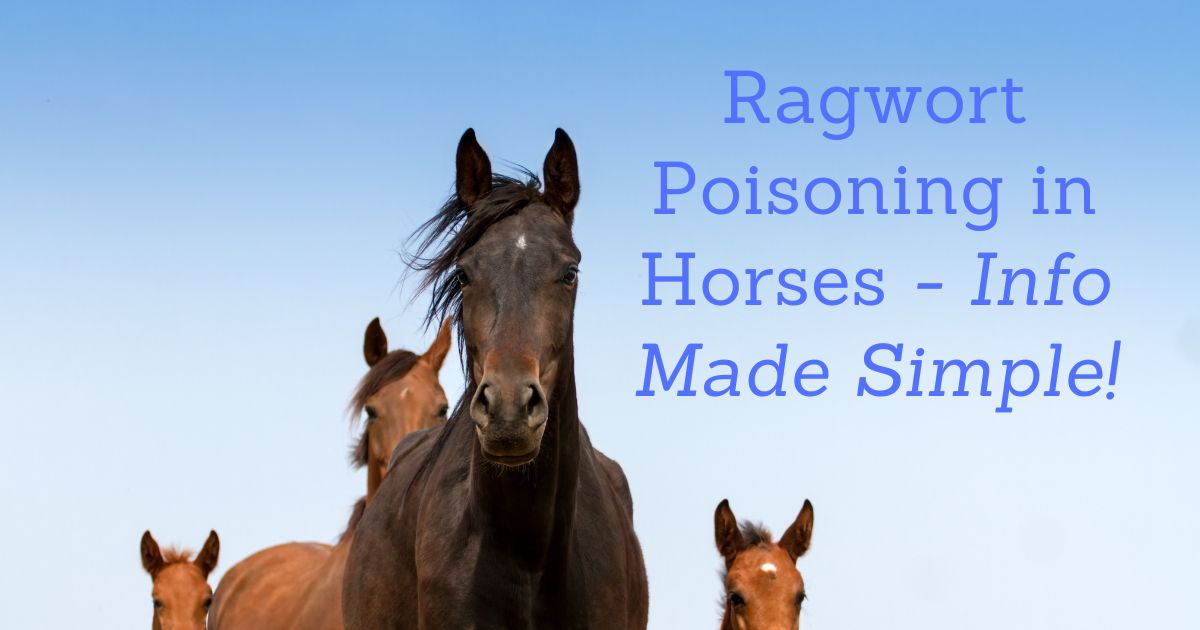What is Equine Ragwort Poisoning?
Do you know about ragwort poisoning in horses?
Ragwort is a plant with yellow flowers, and it contains the alkaloid compound pyrrolizidine. The plant is toxic in dry form and fresh. Its ingestion by horses leads to liver scarring and liver failure.
As the ingestion of this plant has a cumulative effect, a little bit of daily ingestion or large piece ingestion in one go by your horse is equally dangerous and can be lethal.

The Symptoms and Signs of Ragwort Poisoning in Horses
Horse poisoning symptoms due to ragwort ingestion are listed below:
- Lethargy and weakness
- Photosensitivity
- Significant weight loss
- Blindness
- Difficulty breathing
- Loss of balance and walking in circles
- Staggered gait
- Head pressing
- High body temperature
- Difficulty standing
- Jaundice
Regarding ragwort and poisoning, remember that symptoms may not appear until there is a significant progression of the condition.
The ragwort plant contains toxins known as alkaloids. Examples of these notorious alkaloids are jacobine and jacozine, jaconine, retrorsine, otonesine, senecionine, senkirkine, and seneciphylline.
If you think your horse has ingested or has been ingesting ragwort over a certain period of time, it is crucial that you contact your veterinarian as soon as possible.
The veterinarian will record your horses’ symptoms and perform a physical exam. You will need to provide your vet with a detailed clinical history and feeding habits of your horse.
The veterinarian will also take a blood sample to check the liver enzyme levels. These will give a picture of the condition of the liver.
A liver biopsy may also be needed to determine more accurately the condition of the liver and its cells.
Treating Ragwort Poisoning in Horses
Unfortunately, when it comes to ragwort poisoning, there is no definitive treatment.
Treatment is supportive, and in severe cases, the damage caused by this plant may be irreversible.
As part of the supportive treatment, supplements such as vitamin B12 and milk thistle are beneficial.
During the treatment period, your veterinarian will check the liver enzymes of your horse by re-sampling blood. These liver enzymes will show your veterinarian whether your horse responds well to treatment.
When it comes to ragwort poisoning, prevention is better than cure. Your horse may show no signs at first; however, as the toxin progresses into the liver, it also damages its ability to repair itself.
It is possible that when the symptoms appear, the damage done to the liver is extensive and possibly past the point of recovery.

Can the Condition be Prevented?
Yes, you can prevent ragwort poisoning in horses, and keeping your horse safe and healthy is imperative.
Aggressive pasture management is needed to remove this plant from pastures. An important point to be discussed here is that if you have neighboring pastures, you must also discuss ragwort management with your neighbors.
If the neighboring land is not also managing the eradication of ragwort, the wind will blow seeds into your pasture, and this toxic plant will again appear. One ragwort plant produces thousands of seeds.
There is only one way to prevent ragwort poisoning: ensure your beloved horse does not have access to ragwort on pasture.
Ragwort also accumulates in the body, so even if your horse consumes a small amount frequently, this will also lead to severe poisoning and liver damage with time.
Learn to identify poisonous ragwort at all its life stages and when they appear. For example, seeds appear from autumn onwards, and mature plants appear between May and October.
When removing ragwort, permanently remove the whole plant. Leaving behind fragments of ragwort does not effectively remove the plant, as it also sprouts from shoots.
Dispose of the gathered ragwort responsibly. Please do not leave it anywhere near your horse or its pasture. When ragwort is dry, it loses its bitter taste making it even more palatable to horses.
How is it Controlled?
Effective poisonous ragwort control is achieved by rigorous observation and corralling of its appearance.
First of all, learn to recognize ragwort. Look for the characteristics listed below to help you, and also look for representative images of the plant to help you identify it with ease:
- The flower heads are yellow, and several are on top of the stalk.
- The stem is tough and tall.
- Their leaves are long and irregular and have a ragged appearance.
It is a biennial plant, and in its first year, it forms green rosettes. It is much taller in its second year and produces its characteristic yellow daisy-like flowers. The Latin/scientific name of the plant is Senecio jacobaea.
You can use herbicidal/chemical treatments on pasture. The best time to do this is in September. Bear in mind caution is needed when using herbicides. Your horse should not be returned to pasture for at least four weeks after treating the land with a herbicide or any other chemical treatment. This is the given amount of time needed for ragwort to decay fully.
Your local farm merchant can help you choose an appropriate herbicidal spray for your pasture. Please provide them with as many details as possible such as the size of your pasture. What animals do you keep etc.? This way, they can give the best solution suitable for you.
Pull up any dead, live, or dying plants. The best practice after collection is to burn the collected plants. Ideally, use a spot burner. Please do not leave any plants where your horse may have access to them.
Cut back ragwort plants to prevent their seeds from dispersing through the wind.
Manage your horses’ eating habits. Do not allow overgrazing in a certain patch of pasture, as bare areas are created and give way to growing weeds.
Ensure that your horse has adequate grazing or food sources, for example, hay, thus helping your horse to feel full and not tempted to eat any ragwort.
Is Ragwort Poisonous to Humans?
So what about humans? You may wonder if ragwort is poisonous to humans and what you can do to protect yourself.
The answer to this question is yes; poisonous ragwort also threatens humans. Even though the effect of ragwort is a lot milder than in horses, you must take precautionary steps.
Instances of ingestion are rarer in humans due to the plants’ low palatability. It is not used as food by humans as it is very bitter.
Skin irritation/dermatitis is the most frequently reported symptom in humans. The toxin produced by ragwort enters the circulation through the skin.
Protective personal equipment, such as sturdy, waterproof gloves, must be worn when collecting ragwort. Arms and legs must also be covered and not come into contact with the plant.

Conclusion
The most important takeaway message from this article is that it is imperative to control and eradicate ragwort from your pastures and neighboring lands.
If you have young horses on pasture, be extra vigilant, as they are the ones that will often experiment the most with eating unusual plants.
Remember that whole plant removal is necessary, even when dead and dry. Ragwort is still toxic even when dead, and eating it over a period of time will again lead to ragwort poisoning.
In instances of advanced and chronic poisoning, unfortunately, euthanasia of the horse is often advised. And the only option for treatment is supportive care.
Even though this weed may look pretty, it is one you do not want growing in or anywhere near the vicinity of your pastures. Keep your pastures clear and your horses safe. Read our article and find out Science-Backed Info On Potomac Horse Fever.

